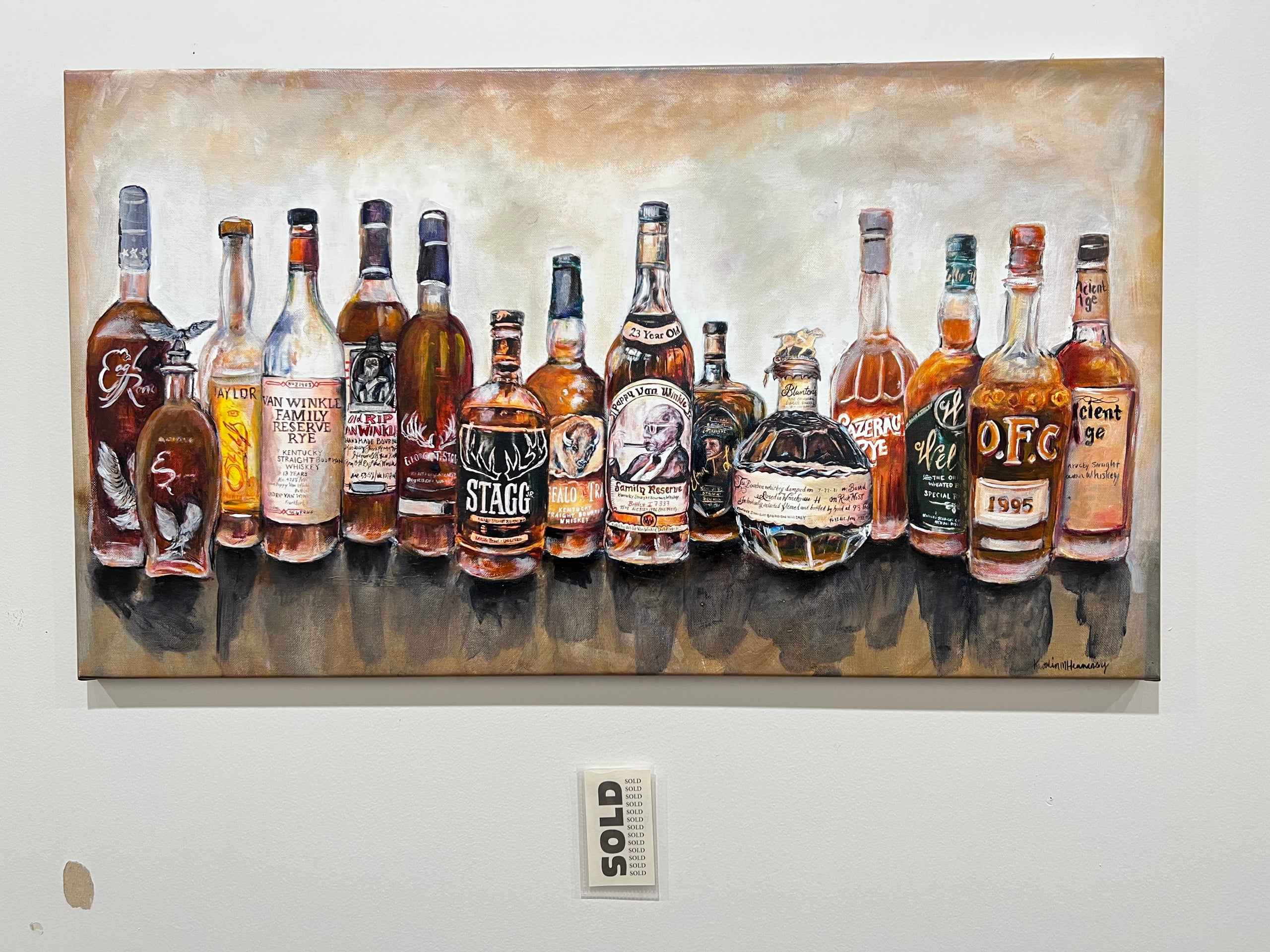Limited Edition Bourbon Art: Why Collectors Are Flocking to One-of-a-kind Finds
The Relevance of Whiskey Art in Celebrating Heritage and Workmanship in the Beverage Industry
The complex connection between scotch art and the celebration of heritage and workmanship within the beverage industry can not be overstated. Through attentively developed labels and containers, bourbon brands envelop their historical roots and the artisanal abilities that define their manufacturing methods.
The Historic Roots of Whiskey
At the heart of whiskey's appeal exists a rich tapestry of historic roots that trace back to old people. The origins of scotch can be connected to the distillation methods of the Sumerians and Babylonians around 2000 BCE, where early types of fermented grain beverages began to arise. However, it remained in the Center Ages that the art of distillation progressed significantly, especially in Ireland and Scotland, bring about the production of whiskey as we recognize it today.
The term "scotch" itself stems from the Gaelic word "uisce beatha," suggesting "water of life." This phrase highlights the social value of whiskey in Celtic societies, where it was commonly connected with routines, celebrations, and public bonding. By the 15th century, purification became an acknowledged craft within monastic communities, leading the way for the facility of lawful distilleries.
As profession paths broadened, scotch's appeal expanded, going beyond regional boundaries and catching the passion of connoisseurs worldwide. Limited Edition. This historical journey shows not just the workmanship behind bourbon manufacturing yet additionally its essential role in cultural and social contexts, marking it as a substantial drink throughout history
Artistic Expression in Branding
Whiskey branding stands as a compelling junction of creativity and commerce, where visual identity plays an important function fit consumer assumption. The appearances of bourbon tags, product packaging, and marketing materials mirror not only the brand's tale however additionally its core worths and heritage. Via imaginative expression, distilleries convey a story that reverberates with consumers, evoking feelings and sparking connections.
Making use of shade, typography, and images in branding serves to separate products in a saturated market. Traditional themes might stimulate a sense of credibility and workmanship, while modern-day designs can represent technology and forward-thinking. This critical imaginative direction enhances brand acknowledgment and loyalty, allowing consumers to build a personal relationship with the scotch they choose.
Moreover, artistic expression in branding usually offers as a party of local heritage. Distilleries regularly include regional icons or historical references into their layouts, developing a sense of location that welcomes consumers to take part in a broader cultural experience. Eventually, the virtuosity behind bourbon branding not only boosts aesthetic charm however likewise improves the total narrative of the brand name, fostering a deeper appreciation for the craftsmanship and heritage embedded in each bottle.
Workmanship in Bottle Design
The artistry evident in scotch branding prolongs beyond visual identity to include the craftsmanship associated with container layout. Each container acts as a vessel not just for the spirit within, but likewise for the tale it outlines its custom, top quality, and origin. The style procedure calls for careful focus to detail, as components such as form, product, and closure add significantly to the general understanding of the scotch.
Workmanship in bottle style includes picking top quality glass that can improve my response the bourbon's shade and clarity, while also providing a responsive experience for the customer. The silhouette of the container must be both practical and cosmetically attractive, frequently reflecting the heritage of the brand. Numerous distilleries choose special forms or printed logo designs that stimulate a feeling of authenticity and history.
Furthermore, the tag design and typography play a critical duty in communicating the brand name's story. Whiskey Art. A well-crafted bottle not only captivates the consumer's eye however likewise reinforces the brand name's commitment to quality and practice. By doing this, the workmanship of container style becomes a crucial aspect of the bourbon experience, combining virtuosity with a profound regard for heritage
Social Relevance of Whiskey Art
Commemorating practice and craftsmanship, the social significance of scotch art goes beyond simple aesthetics, linking with the historic and social stories of the regions from which it originates. Each container works as a canvas, depicting the distinct stories, folklore, and practices that have actually formed regional whiskey-making practices. The elaborate designs typically mirror the heritage of the distillers, including symbols and themes that reverberate with the culture and worths of their neighborhoods.

Additionally, bourbon art plays a vital function in communal gatherings and celebrations, working as a concrete web link between individuals and their shared experiences. By appreciating the virtuosity in whiskey packaging, customers cultivate a deeper understanding and regard for the craft, ultimately enriching their satisfaction of the beverage itself.
Modern Trends in Scotch Discussion
Over the last few years, the presentation of bourbon has actually advanced to mirror modern preferences and patterns while still honoring standard craftsmanship - Whiskey Art. Distilleries are increasingly focusing on visual aspects that enhance the general alcohol consumption experience, linking the gap in between heritage and modernity
Cutting-edge bottle designs have emerged, often integrating sustainable products and creative tags that tell engaging stories. Numerous brand names now collaborate with regional artists, infusing their items with unique aesthetic expressions that reverberate with consumers. Furthermore, limited-edition releases are usually packaged in collectible containers, adding value and appeal for connoisseurs.

Verdict
In conclusion, scotch art offers as an important channel for sharing the heritage and workmanship intrinsic in the beverage sector. With elaborate branding, innovative container designs, and culturally significant artistic elements, bourbon brands effectively honor their traditions and link with consumers.


Craftsmanship in container style entails picking top notch glass that can boost the scotch's find out here now shade and clearness, while additionally supplying a responsive experience for the consumer. In this method, the workmanship of container layout ends up being a crucial aspect of the whiskey experience, combining virtuosity with an extensive respect for heritage.
In conclusion, bourbon art offers as an essential conduit for expressing the heritage and workmanship integral in the drink market.